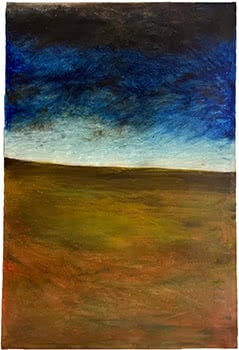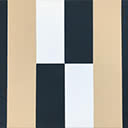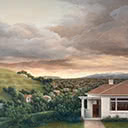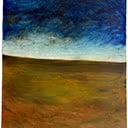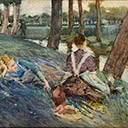A Poem of Kaipara Flat, 1971
102.5 x 68.5 cm
est. $150,000 - 200,000
PROVENANCE
Collection of Jeffrey Harris, artist Gow Langsford Gallery, 1996 Important, Early & Rare, International Art Centre, 22 Oct 2009 Private Collection, Auckland
Record Number cm000956 Colin McCahon Online Catalogue www.mccahon.co.nz
In the summer of 1971 Colin McCahon resigned from Elam School of Fine Arts where he had been teaching since 1964 and became, at age 52, a full-time artist, his sales by then sufficient to justify this bold move. He told Peter McLeavey: This business of living off painting is tough. So far - so good - but I've got to keep it up or Anne and I starve' (Simpson, Is This the Promised Land?, p. 149).
An early manifestation of his new freedom was a flood of brilliantly coloured watercolours depicting scenes near his studio at Muriwai Beach, built in 1969. Several watercolour series painted in 1971 filled two exhibitions: 25 of them including the title series in View from the top of the cliff at Peter McLeavey Gallery in April 1971; and a further 10 (plus other paintings) at Dawsons Gallery, Dunedin in July-August 1971 - some entitled Helensville, others Poems of Kaipara Flat. Altogether there were at least 18 paintings in the latter series. Kaipara Flats is on the shore of Kaipara Harbour north of Muriwai and Helensville. McCahon said of it: This is a shockingly beautiful area - I do not recommend any of this landscape as a tourist resort. It is wild and beautiful; empty and utterly beautiful. This is, after all, the coast the Maori souls pass over on their way from life to death - to Spirits Bay...The light and sunsets here are appropriately magnificent.'
As the name implies, the landscape of Kaipara Flats is featureless (at least as McCahon depicts it); just land and sky with the horizon between. Generally in this series the horizon is a simple line fairly low in the picture resulting in a huge expanse of sky, while in some (as in this example) the horizon line falls close to the middle giving equal emphasis to land and sky. In this example the horizon is not dead straight but slopes gently to the right.
The simplicity of the landforms and the structure McCahon employs gives him maximum opportunity to exploit colour and light. He is not normally an artist we associate with strong colour (unlike, say, Pat Hanly). Very often, especially in his later work, colour is restricted to black and white. There are exceptions to this - the early Biblical paintings are often highly coloured as are many paintings done at Titirangi in the 1950s. But these Kaipara watercolours are exceptional, presenting a range of colour and variation of light more often associated with J M W Turner or Mark Rothko. McCahon remarked: All this colour & fun is a direct result of leaving the school.. Although the colour in these works is sometimes almost Fauvist in intensity, the artist keeps in touch with reality by depicting moments (such as early morning or sunset) when nature itself puts on a vividly colourful display. Here there is lovely variation in both parts of the picture: the sky zone is deep blue with darker touches and intense white light along the horizon; the land zone is a mixture of rich ochres from warm reddish tones through yellow to brown. The brush work is subtle and refined.
Why does McCahon call this painting (and others like it) a Poem? Hard to say. He was a keen reader of poetry: Hopkins, Rilke, Brecht, Robin Hyde, R.A.K. Mason - and had many poet friends (Brasch, Baxter, Caselberg, Hooper). Possibly the simple repeated structures of the pictures (sky/horizon/land) are analogous to the lines and stanzas of a poem; or maybe the lyricism of the colourful scenes simply reminded him of the effect of poetry. Whatever the reason, this one is (in Keats's words), a thing of beauty and a joy forever.
PETER SIMPSON

